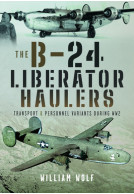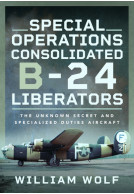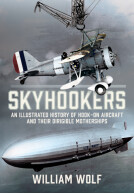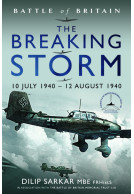Hitler's and Hirohito's 'Kamikaze' Flying Bombs (Hardback)
The Axis’ Manned Suicide Attack Aircraft of WW2
By
William Wolf
Imprint: Air World
Pages: 256
Illustrations: 150 mono illustrations
ISBN: 9781036119270
Published: 30th July 2025
Imprint: Air World
Pages: 256
Illustrations: 150 mono illustrations
ISBN: 9781036119270
Published: 30th July 2025
You'll be £20.00 closer to your next £10.00 credit when you purchase Hitler's and Hirohito's 'Kamikaze' Flying Bombs. What's this?
+£4.99 UK Delivery or free UK delivery if order is over £40
(click here for international delivery rates)
Order within the next 5 hours, 53 minutes to get your order processed the next working day!
Need a currency converter? Check XE.com for live rates
(click here for international delivery rates)
Order within the next 5 hours, 53 minutes to get your order processed the next working day!
Need a currency converter? Check XE.com for live rates
On 1 April 1945, US troops launched the largest amphibious assault of the Pacific War on the heavily-defended island of Okinawa. Supporting the invasion, the USS West Virginia participated in the bombardment of entrenched Japanese defenders. That evening, a Japanese aircraft launched a Yokosuka MXY-7 Ohka, a rocket-powered kamikaze plane. West Virginia was hit by an Ohka, becoming the first ship damaged by such a weapon. Twelve days later, the USS Mannert L. Able became the first ship sunk by an Ohka.
The deployment of the Ohka was a desperate measure by Japan as the war turned against them. This manned flying bomb evolved from earlier kamikaze tactics. However, the Germans had also considered similar weapons. As early as 1944, figures close to Hitler, such as Otto Skorzeny and Hanna Reitsch, advocated for kamikaze missions. Hitler authorized the creation of the Leonidas Staffel to prepare for these attacks, leading to the development of the Messerschmitt Me 328 and Fieseler Fi 103R, also known as the Reichenberg.
Though the Fi 103R began production in October 1944, the changing dynamics of the war rendered it obsolete by the time it was ready for use. The project was formally abandoned in March 1945. This book details the development of both the Ohka and Reichenberg.
There are no reviews for this book. Register or Login now and you can be the first to post a review!
About William Wolf
Dr WILLIAM WOLF was a dentist for twenty-two years before retiring at the age of 45 to pursue his aviation interests and outdoor pastimes. Over the past forty-five years he has amassed an archive of over 27,000 books and magazines, 10,000 or more images, and hundreds of reels of microfilm, among other material, on the subject. He is the author of twenty-four books on aerial warfare in the Second World War, including nine on American bombers, two on US fighters, five on American flying units, and three volumes on US aerial armament.
More titles by William Wolf
Other titles in Air World...

















